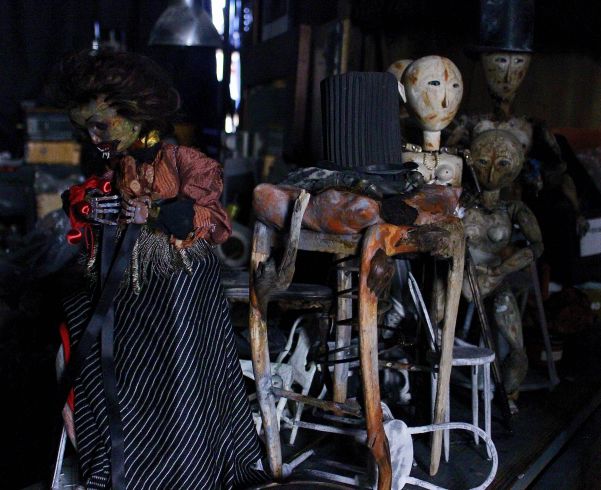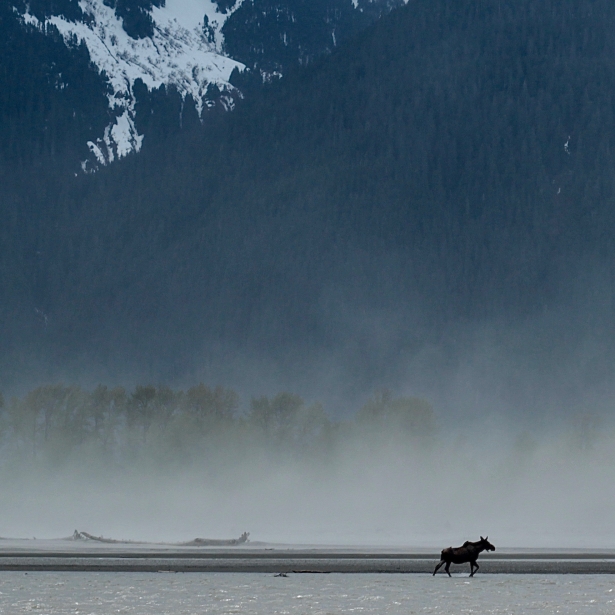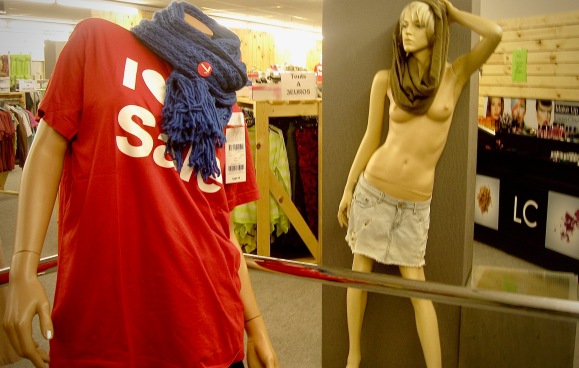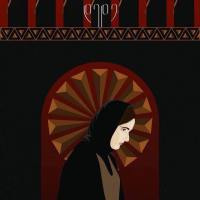Puppetry and Texture Part 2

Puppet actors waiting in the dark wings of the Quay Brothers studios London in 2017.
And so I began my investigations of puppetry. If the world was increasingly being emptied by the sterile textures of this shiny but hollow environment we were creating for ourselves. Could puppetry have an antidote to it? Since approximately the year 2000 music has become background soundtrack. Too much reading is now situated on another superficial glass plane. Art is the ‘wallpaper’ for your screen. I thought, maybe in this new world the puppet had a possibility of speaking into this flatness to help us to find the meaning of objects again? But that could only be true if humans were meant to live in textured environments not the glossy surfaces of our shopping malls and digital magazines.
But was that true? Could we not live anywhere? Has not humanity adapted to the Sahara Desert and the Arctic Coast? Maybe the distraction provided by our screens was exactly the kind of coping mechanism that we needed to live in this age? And nothing was wrong here. And there was no correlation between the vacuous commercial surfaces of this world and the insanity of our lives in this time.

Moose in a silt storm on the Chilkat River in Alaska.
Obviously the original human environment was the natural world. And nature has certain visual features. One is expanse, the other a fractalized complexity the closer you get. When you first see the natural features often what we grasp is the whole, the forest, the desert, the ocean, the mountains. Then as we approach closer things change definitively into unique specific unrepeatable objects. And the textures overwhelm us through their complex structures. And this twofold process does something for us. It acts upon us something like food. The larger vistas seem to calm us, while the closer explorations seem to excite us with discoveries. Thus the ocean at the beach leaves a strong impression, which is then interrupted by the discovery of a strangely shaped piece of driftwood floating up to the shore in front of us. This is our general experience of nature.
Traditional art has less complexity than the natural world yet it has a similar affect upon us. We stand in front of a Rembrandt at a museum. We take in the overall impression, then slowly we begin to attend to the many individual features, indeed textures of the piece. And it can take years to appreciate one work by such an artist. Hans Rookmaaker, the late Dutch art historian, tells the story of a woman who had been looking at Rembrandt’s Night Watch for years, yet had never even seen one of the figures in it, until it was pointed out by a casual visitor. Older architecture likewise made a similar impact upon us. We approach the structure seeing one building, a cathedral for instance, but the closer we observe it the more we see. Even its decaying texture becomes a part of its features. But it’s a lot more difficult to have that experience with a Ken Noland chevron or the Brutalist AT&T Long Lines building in Manhattan. And by the time you make a Google image search for dog photos or collect images of anime on Pinterest one is not encouraged to spend any time entering into these images. They are simply digested, stored, and evacuated of meaning.

Moths as Texture as Art in the Wunderkammer at the Strahov Monastery in Prague.
Do the objects and textures we are surrounded by mean anything to us? There is a story of a girl named Genie+ (not her real name) who was a prisoner of her own house from her birth until she was 12 years old. She was locked in a room with blank white walls and strapped to a plastic potty trainer. She slept in a plastic sleeper crib. She was not spoken to except to largely understand simple commands like ‘No!’ And that was her life until one day her mother finally (!) decided to get her away from her father and take her to a social worker. Sensibly they took the girl away from this negligent woman. And she was put in an adoptive situation with scientists who realized that she was the product of a forbidden experiment: What happens if you delay language acquisition in a child and cut down all outside stimulation? Well it’s ultimately a tragic story and unrelated to our theme. But here is what sparked my interest. When, for instance, introduced to the ocean for the first time, she of course had no words, and yet the indescribable expression on her face spoke of something beyond anything any of us can know. Yet even with that experience, what she was most attracted to was plastic. Plastic! The only thing in her formative environment. What she saw in her world. And that tells me something. What we surround ourselves with has a profound affect upon us. Far more than we realize. And yet there is her mouth open wanting to speak and unable to at the sight of the ocean.

Oh Brave New World that has such Textures in it! Brussels, but this could be anywhere.
Maybe we have been conducting a kind of forbidden experiment upon ourselves for years now as we have slowly manufactured this new empty world. Interestingly in my recent thinking about texture I have noticed that there is very little serious writing on the subject. And that has to relate to the fact that even 50 years ago the Modern world had far more texture in it than it does now. This slow ironing out of the wrinkles of texture has been creeping up on us relentlessly. And it is this that has focused my attention to the realm of the puppet, and specifically in Europe. Both traditionally and in its newer incarnations.






Pingback: Puppetry and Texture Part 3 | GRAVITY FROM ABOVE